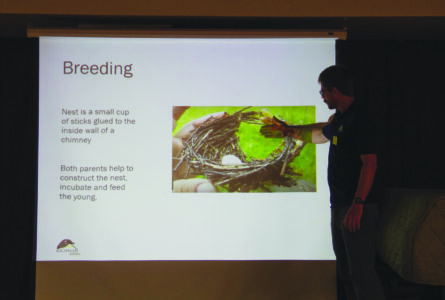U.P. residents speak out on Line 5 tunnel
MARQUETTE — Upper Peninsula residents voiced their support and concern about the proposed Line 5 tunnel through online public comment submissions for the Mackinac Straits Corridor Authority meeting recently.
Residents across the state had the opportunity to share their opinions on the proposed tunnel either in-person during the meeting or by submitting comments online.
Many online submissions came from U.P. residents with mixed reviews.
Marquette resident Dr. Scott Emerson questioned the safety and risks that would come if Enbridge’s Line 5 were to be built. He asked if Line 5 was built and spilled like the Kalamazoo River oil spill, would the MSCA and state would be responsible for “the expense of any cleanup.”
“Will Enbridge be required to have at least a $5 billion performance bond deposited with the state up front for the ‘life’ of the tunnel, so Michigan taxpayers (the employers of the MSCA) are not left with a catastrophic environmental cleanup due to no fault of their own? Does the liability of destruction of Great Lakes waters and shore flow to Enbridge, MSCA and its board, the state, the feds- who will be the responsible defendant?” he said. “Can the state and the MSCA close the operation of the tunnel once it is built at any time sooner than the year 2122?”
Emerson also said the proposed tunnel could create a target for terrorist attacks on the region.
“I see this as a national security threat. Who is responsible for competent, high-level security? The United States and Canadian military, state police, Michigan National Guard, Homeland Security or Enbridge’s private security force?” he said. “Who pays for this security up front so there is never a lapse for 99 years? If Enbridge’s control room is hacked and a $1 billion ransomware attack occurs, who will pay?”
Ishpeming resident Timothy Andrews said the state should adopt a “plan twice, dig once” philosophy in regard to building a tunnel under the Straits of Mackinac.
“Building a project of this scale in such a sensitive environment should maximize the utility of the corridor by considering alternate functionalities,” he said. “The possibility exists that digging a larger multi-use tunnel now would have less impact than developing an awareness later of a need for expanded functionality, resulting in the building of a second tunnel.”
Andrews continued saying that “important alternative uses are readily conceivable,” proposing a dual-cannula tunnel (an oval shape containing two circles) with a compartmentalized multi -utility corridor on one side and transportation access on the other.
He said Enbridge, alongside other types of utility providers, could lease space in a compartment of the multi-utility corridor and safely pipe petroleum products through an anoxic line designed to reduce risks to other compartments in the tunnel.
“A great opportunity to advance the future of the state of Michigan arises with the development of passenger rail services across the Straits of Mackinac. The unity of the peninsulas of this beautiful state can be further improved by reducing crossing times at the straits and providing transportation services to people who cannot drive, who do not have the means to drive, or who appreciate the convenience of not having to drive oneself,” Andrews said. “A rail line across the Straits of Mackinac, especially one which serves as a direct line to the Capitol and the Wolverine Line, enhances access for the people of the Upper Peninsula to their state government and to a wider range of economic opportunities within Michigan. Such a line would also provide a scenic low-stress, low-impact means for the people of the Lower Peninsula to visit the wild splendors, winter activities and many historic sites of the Upper Peninsula.”
Overall, the Upper Peninsula residents who weighed in voiced their support for the proposed tunnel.
Marquette resident Colleen Hayse said the MSCA is making a “good decision” to approve the siting application for the tunnel.
“The tunnel is a safe way to protect our lakes and an economic answer for transporting crude oil and other natural gas liquids,” Hayse said.
Another Marquette resident, Dr. Matthew Songer, said he is in support and said many residents are “living on the edge financially” and their finances are strained due to the increase in energy costs that are associated with green energy projects.
“We cannot afford the extra cost of running the oil and natural gas above ground, which is the only other solution (truck or train). The safety of pipelines for transporting oil and natural gas is so much greater than trucking it or moving by trains that there shouldn’t even be a discussion,” he said. “During my 40-year career I have taken care of numerous folks injured by trucks or trains related to moving oil or gas. I worked in a burn unit and took care of many people who were critically burned (some died) as a result of a tanker truck accident and resultant fire. Never in my career have I taken care of or even heard of someone who was injured from a pipeline accident.”
Ishpeming Mayor Jason Chapman said the proposed Line 5 is “critical” for rural residents, especially in the U.P. where many propane users get their source of fuel for heat from Line 5 once the natural gas is converted into propane.
“We cannot allow for any further delays because something catastrophic could happen, and people rely on the pipeline,” he said.
The Michigan Public Service Commission approved a siting application filed by Enbridge Energy on Dec. 1 for a proposed replacement segment of twin pipelines now located on top of the lakebed along the Straits of Mackinac.
The proposed project that would replace the current infrastructure with a single pipeline in a tunnel deep below the lakebed is still subject to additional government approvals and permits. The MPSC also set forth conditions related to the tunnel’s safety and construction.
“It’s time to build the tunnel so that we can protect the waters of the Great Lakes, the environment and the people who use the precious waters, while keeping energy flowing to this region,” Enbridge Senior Vice President of Public Affairs, Communications and Sustainability Mike Fernandez said in a news release. “This tunnel is really a win-win solution for Michiganders and the region.”
Built in 1953 for the purpose of transporting oil, Line 5 is a single petroleum pipeline extending 645 miles across the state. It’s a single 30-inch diameter pipe except for the section in the straits, which is a 4.5 -mile section made up of two 20-inch diameter pipes that lie on the lake bottom.
Line 5 transports up to 22.68 million gallons of crude oil and other natural gas liquids per day. Some natural gas liquids are refined into propane and used in the U.P. while other products are routed for processing at oil refineries in Detroit and Ohio. Some Michigan companies use Line 5 to transport the oil they produce.
Former Michigan Gov. Rick Snyder created the MSCA, tasked with overseeing building and operating a utility tunnel beneath the Straits of Mackinac, in 2018.
Its board then approved an agreement with Enbridge to create a utility tunnel in the Straits that would prevent oil from entering the straits in case of a spill.
Current Gov. Gretchen Whitmer and Attorney General Dana Nessel publicly opposed the continued operation of Line 5 in the straits.
To watch the full meeting, visit youtube.com/@MichiganDOT.



